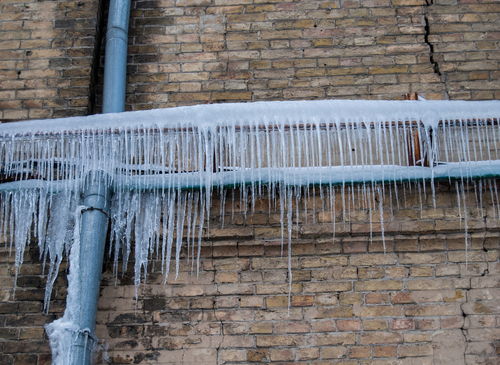Preventing Frozen Pipes in Cold Weather: Critical Advice
Preventing Frozen Pipes in Cold Weather: Critical Advice
Blog Article
The writer is making several good pointers relating to 6 Ways to Prevent Frozen Pipes overall in the content below.
:strip_icc()/snow-outdoor-faucet-pipes-4af65d1e5e904fb1aa7bf74071fe5d89.jpg)
Winter can ruin your pipes, especially by freezing pipes. Right here's just how to stop it from taking place and what to do if it does.
Introduction
As temperatures drop, the threat of icy pipes increases, possibly bring about pricey repair services and water damage. Understanding how to stop frozen pipelines is essential for house owners in cold environments.
Avoidance Tips
Shielding prone pipelines
Wrap pipes in insulation sleeves or utilize warm tape to safeguard them from freezing temperatures. Concentrate on pipelines in unheated or external locations of the home.
Heating strategies
Maintain interior rooms sufficiently heated up, specifically areas with pipes. Open up cabinet doors to allow warm air to flow around pipelines under sinks.
How to identify frozen pipelines
Look for decreased water flow from faucets, unusual odors or noises from pipes, and noticeable frost on revealed pipes.
Long-Term Solutions
Architectural adjustments
Consider rerouting pipes away from exterior wall surfaces or unheated locations. Add added insulation to attics, cellars, and crawl spaces.
Upgrading insulation
Buy top notch insulation for pipelines, attics, and wall surfaces. Correct insulation assists maintain consistent temperature levels and decreases the threat of icy pipes.
Protecting Exterior Plumbing
Yard hose pipes and exterior faucets
Separate and drain pipes garden tubes before winter. Set up frost-proof faucets or cover outdoor taps with insulated caps.
Comprehending Icy Pipes
What triggers pipelines to freeze?
Pipes ice up when revealed to temperatures below 32 ° F (0 ° C) for prolonged durations. As water inside the pipelines freezes, it expands, taxing the pipeline walls and potentially triggering them to rupture.
Dangers and problems
Icy pipelines can bring about water supply disturbances, home damage, and costly repair services. Ruptured pipes can flood homes and cause extensive architectural damages.
Signs of Frozen Pipeline
Recognizing frozen pipes early can stop them from rupturing.
What to Do If Your Pipes Freeze
Immediate activities to take
If you presume frozen pipes, maintain faucets available to ease pressure as the ice thaws. Utilize a hairdryer or towels taken in hot water to thaw pipelines slowly.
Verdict
Stopping frozen pipes calls for positive measures and quick feedbacks. By comprehending the reasons, indications, and safety nets, property owners can shield their plumbing during winter.
5 Ways to Prevent Frozen Pipes
Drain Outdoor Faucets and Disconnect Hoses
First, close the shut-off valve that controls the flow of water in the pipe to your outdoor faucet. Then, head outside to disconnect and drain your hose and open the outdoor faucet to allow the water to completely drain out of the line. Turn off the faucet when done. Finally, head back to the shut-off valve and drain the remaining water inside the pipe into a bucket or container. Additionally, if you have a home irrigation system, you should consider hiring an expert to clear the system of water each year.
Insulate Pipes
One of the best and most cost-effective methods for preventing frozen water pipes is to wrap your pipes with insulation. This is especially important for areas in your home that aren’t exposed to heat, such as an attic. We suggest using foam sleeves, which can typically be found at your local hardware store.
Keep Heat Running at 65
Your pipes are located inside your walls, and the temperature there is much colder than the rest of the house. To prevent your pipes from freezing, The Insurance Information Institute suggests that you keep your home heated to at least 65 degrees, even when traveling. You may want to invest in smart devices that can keep an eye on the temperature in your home while you’re away.
Leave Water Dripping
Moving water — even a small trickle — can prevent ice from forming inside your pipes. When freezing temps are imminent, start a drip of water from all faucets that serve exposed pipes. Leaving a few faucets running will also help relieve pressure inside the pipes and help prevent a rupture if the water inside freezes.
Open Cupboard Doors
Warm your kitchen and bathroom pipes by opening cupboards and vanities. You should also leave your interior doors ajar to help warm air circulate evenly throughout your home.

Hopefully you liked our section on How to prepare your home plumbing for winter weather. Thanks so much for taking the time to browse our short article. For those who appreciated our blog post please consider to share it. We value reading our article about 6 Ways to Prevent Frozen Pipes.
Set Up An Appointment Report this page